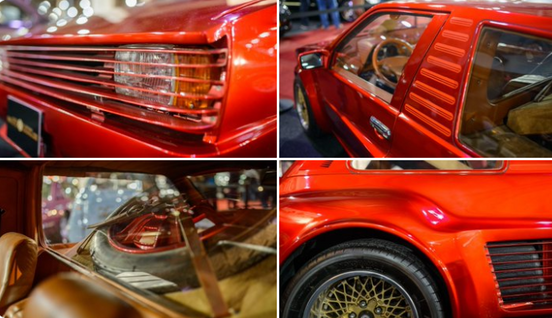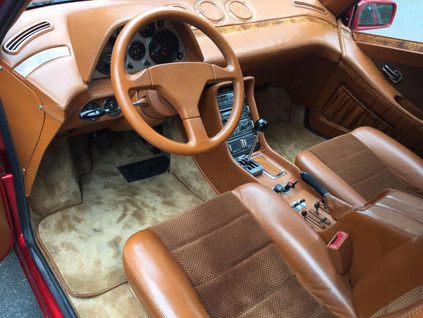Sbarro Super Twelve & Super Eight: Ferrari-powered city cars
- COCKPIT
- Nov 11, 2021
- 3 min read

The Sbarro Super Twelve
The Super Twelve was presented at the Geneva Motor Show in March 1982. Until then, Franco Sbarro was mainly known for his BMW 328 replicas and a few original models such as the Wind-Hound and Wind-Hawk all-terrain vehicles or the Stash sports coupe. Rather imposing cars overall. The Super Twelve, on the contrary, surprises with its reduced dimensions and presents itself as a concentrate of sports car: twelve cylinders developing 240 horsepower wrapped in 3.10 meters of polyester, and barely 800 kg.
The Super Twelve has almost the same dimensions as an Austin Mini, except for the width: 1.75 m against 1.40 m for the Mini. Or 35 cm more which does not go unnoticed! The aggressiveness is also due to the passage from a very rectilinear design at the front to round shapes at the back, all reinforced by a gradient painting (signed Andréini). The large side air intakes, as on the Ferrari Testarossa which will be released two years later, indicate the presence of an engine placed in the rear central position. The car is fitted with Gotti rims (15 inches at the front, 16 at the rear) shod with Pirelli P7. The slatted grille is typical of Sbarro's designs of this era. The rear lights, tinted in body color like the windows, are perfectly integrated, giving a smooth appearance to the stern of the Super Twelve: only the four chrome exhaust outlets and the metal plate pierced with ten holes connecting them protrude.
The interior is completely covered in beige leather. The seats, Recaro harnesses, are separated by a large central console. The premium audio system is located on the ceiling, while an on-board computer is placed within easy reach of the passenger.
The rear window has no upright, like the Citroën AX. Once opened, you can remove the beige leather cover to reveal the engine block: a superb 12-cylinder in-line placed in a transverse position. The particularity of this original block is that it consists of two original Kawasaki 1300 cm3 6-cylinder motorcycle engines. Each has kept its five-speed manual gearbox: there are therefore two gearboxes actuated simultaneously by a single common lever via two linkages. The two motors each drive a rear wheel and are simply connected by trapezoidal belts which stabilize variations in speed. The car can possibly be driven with only one engine in case of mechanical problems. The power rises to 240 horses for 800 kg, that is to say a weight / power ratio of 3.3 kg / horse (4.3 kg / horse for a Lamborghini Countach LP500 of the same period !!). The acceleration is therefore excellent with 5 seconds to go from 0 to 100 km / h. For this the top speed has been sacrificed a little (200 km / h all the same!).
Unique example, the Super Twelve with its particular engine is not a model of smoothness and is quite difficult to master. This is the reason why Sbarro built a second copy with a more conventional engine: the Super Eight presented in March 1984.

The Sbarro Super Eight

Introduced in 1984, the Sbarro Super Eight follows on from the 1981 Sbarro Twelve, which was equipped with a V12 of around 250 hp. Considered to be more civilized than its predecessor, it remains quite brutal with its Ferrari 308 V8 installed in the rear central position. This strong 260 hp engine is associated with a five-speed manual gearbox, also of Ferrari origin.
Capable of reaching around 220 km / h, this small propulsion unit weighing 800 kilos is fitted with four disc brakes. In his very brief announcement, the current owner indicates that it is approved for the road and that it is still in perfect condition today, which the few published photos seem to confirm. These allow us to appreciate the bestial look of the Super Eight and discover its cozy interior with thick carpets, leather and wood veneers.



































Comments